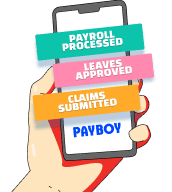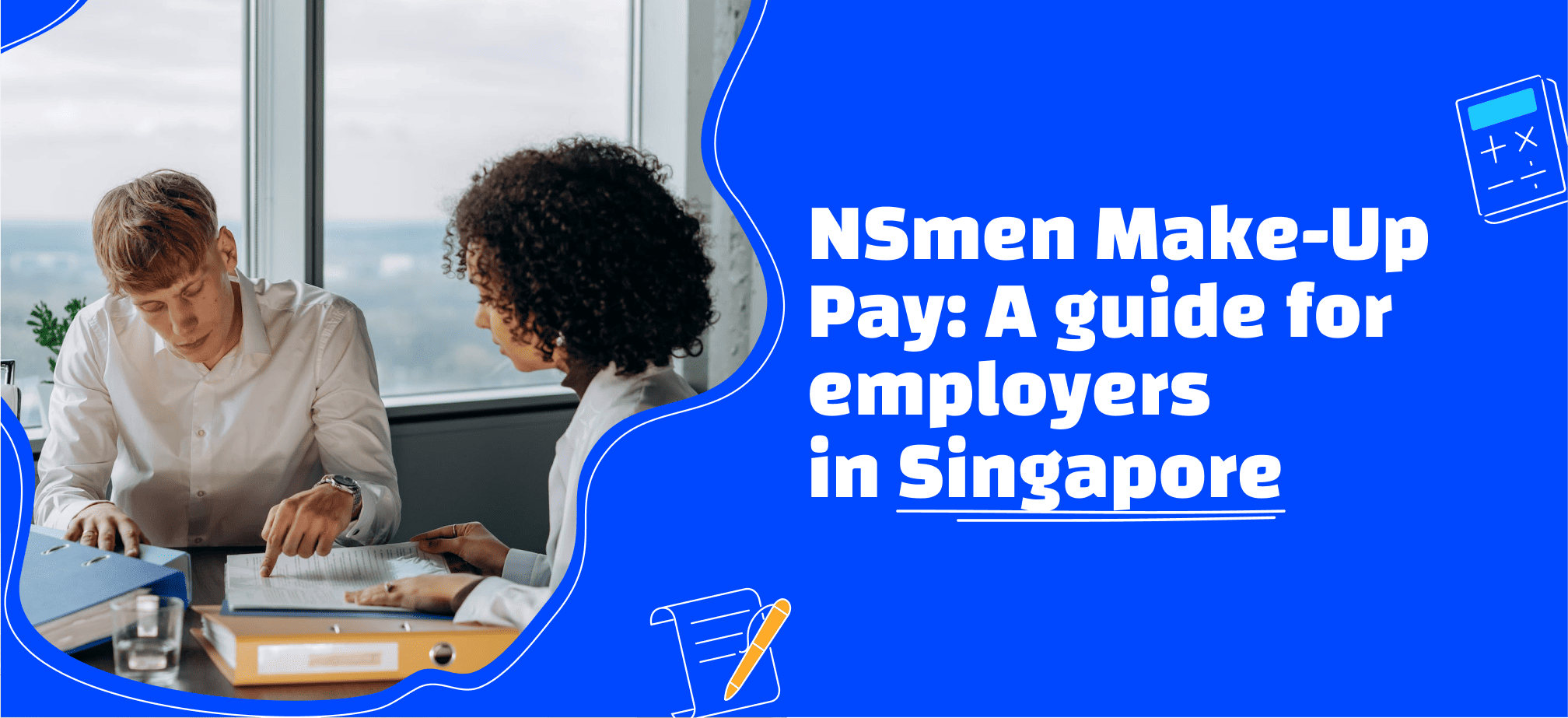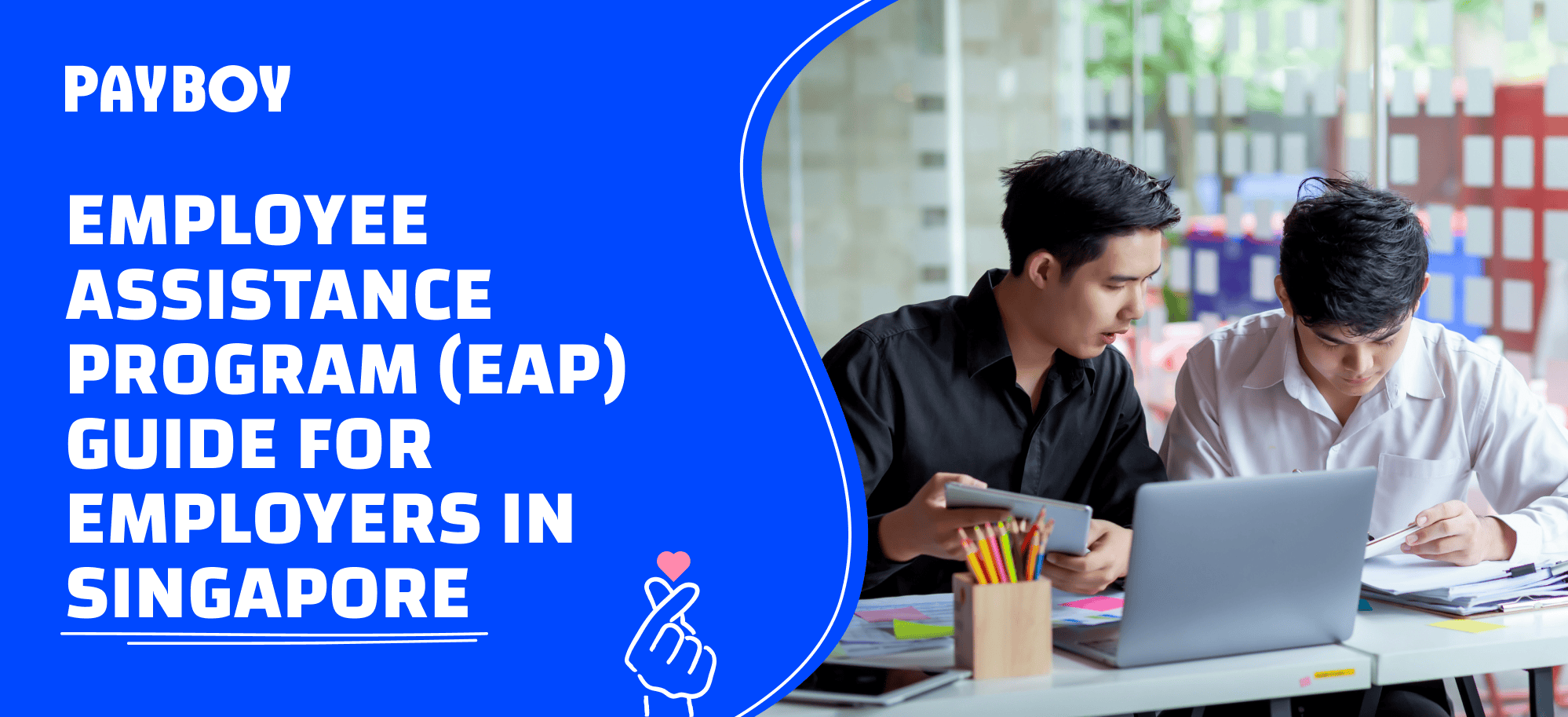As an employer, staying informed about NSmen Make-Up Pay (MUP) is essential for maintaining compliance! In this guide, we will explore what NSmen Make-Up Pay is, how to calculate it, the process of submitting claims, the payment timeline and method, and its impact on CPF contributions. So, let's dive in and gain a comprehensive understanding of NSmen Make-Up Pay!
What is NSmen Make-Up Pay?
NSmen Make-Up Pay is a scheme that enables Operationally Ready National Servicemen (ORNS or NSmen) or SAFVC Volunteers (SV) to claim the difference between their civilian employment income and their Service Pay (SP) or SV allowance. This ensures that the NSmen or SVs do not suffer a loss in income when fulfilling their national service obligations.
How do I calculate NSmen Make-Up Pay?
Here’s a simple formula that you can use:
NSmen Make-Up Pay = Civilian Pay - SP/SV allowance
The civilian pay is based on the employee’s monthly salary data submitted by employers to the CPF Board. Specifically, it takes into account the CPF Ordinary Wages (OW) submitted by employers and the monthly average of CPF Additional Wages data submitted to the CPF Board in the last 12 months, based on the latest CPF OW data used.
Meanwhile, the SP/SV allowance can be obtained from the employee's In-Camp Training (ICT) allowance or through the NS portal.
You can head over to the Sample Calculations section in ns.sg for NSmen Make-Up Pay!
Do I have to submit any NSmen Make-Up Pay claims as an employer?
As an employer, you may be relieved to know that you are not required to submit NSmen Make-Up Pay (MUP) claims and supporting documents.
The process is simplified, as The Ministry of Defence (MINDEF) or Ministry of Home Affairs (MHA) automatically generates the MUP amounts for all ORNS activities, excluding IPPT, NS FIT, and mobilisation.
How can I check the auto-generated Make-Up Pay amounts as an employer?
To check the auto-generated MUP amounts for your employed NSmen, you can access the 'Manage NSmen Payments' eService on the NS Portal.
- Starting one month before the ORNS or SV activity begins, you will be able to view the amounts.
- If the generated MUP amount is accurate, no further action is required, and the payment will be made within 10 working days from the start of the ORNS activity.
This streamlined process reduces the administrative burden on employers and ensures that NSmen/SVs receive their MUP promptly and accurately. However, it is still important for employers to regularly update the CPF Board with the necessary wage data to ensure accurate MUP calculations.
By relying on the auto-generated MUP amounts, employers can focus on other aspects of their business, knowing that the NSmen/SVs under their employment will receive their rightful MUP without the need for manual claims.
What is the payment timeline for NSmen Make-Up Pay?
The payment timeline for NSmen Make-Up Pay (MUP) ensures that NSmen/SVs and their employers receive the necessary payments in a timely manner. Here's how the payment process works:
- Auto-generated MUP amount and SP/SV allowance: NSmen/SVs or their employers will receive the auto-generated MUP amount and SP/SV allowance within 10 working days from the start of the ORNS/SV activity. This payment is based on the automatically calculated MUP amount and the predetermined SP/SV allowance.
- Proposed adjustments or new MUP claims: In some cases, employers may propose adjustments to the auto-generated MUP amount or submit new MUP claims. If these adjustments or new claims are submitted at least two weeks before the start of the ORNS/SV activity and are accepted by MINDEF/MHA, NSmen/SVs or their employers will receive the adjusted amount within 10 working days from the start of the ORNS/SV activity.
- Additional payment for accepted adjustments: If MINDEF/MHA accepts the proposed adjustments or new claims, any additional payment will be made within 14 working days upon receipt of the proposed claims/adjustments and supporting documents. This ensures that any approved changes to the MUP amount are processed and paid accurately.
Overall, the payment timeline for NSmen Make-Up Pay aims to provide clarity and efficiency in delivering the rightful payment to NSmen/SVs and their employers, acknowledging their commitment to the national service.
What are the two payment methods for NSmen Make-Up Pay?
Employers on the direct reimbursement to employers of claims for NS Training (DIRECT) Scheme
If you are an employer registered with the DIRECT scheme, you have a simplified payment process for NSmen Make-Up Pay (MUP). Here's how it works:
- Regular payment schedule: As an employer on the DIRECT scheme, you will continue to pay your employees according to your regular pay schedule. This means that you should pay them their full basic salaries and fixed allowance components as per their eligibility. Additionally, any additional payments, such as overtime pay or variable payments like commissions, should also be paid based on your usual monthly practices.
- Additional and variable payments: In terms of additional and variable payments, you can determine the amount that you would typically pay to your employees based on an average of NSmen's past variable payments prior to their NS training. This ensures that your employees receive a fair and accurate representation of the additional and variable payments if they are not under NS training.
- Reimbursement of Make-Up Pay: MINDEF/MHA will reimburse your company for the NSmen Make-Up Pay using the auto-generated MUP amounts. These amounts are calculated based on the wage data submitted by your company to the CPF Board. The reimbursement will cover the difference between the NS pay and the civilian pay, ensuring that your employees receive their full civilian salary during their NS training.
- Direct credit for base Service Pay: If NSmen are eligible for the base NS pay, MINDEF/MHA will credit the top-up amount resulting from the base NS pay directly to their bank accounts. This ensures that the NSmen receive the appropriate compensation for their NS training obligations.
- Update of company’s bank account details: Employers on the DIRECT Scheme who need to update their company's bank account details can conveniently do so through the 'Manage NSmen Payments' eService on the NS Portal. This allows for smooth and accurate payment processing.
By participating in the DIRECT scheme, employers benefit from a streamlined reimbursement process, ensuring that NSmen receive their rightful MUP without delay. It is advisable to stay updated with any changes or updates related to the scheme by regularly accessing the 'Manage NSmen Payments' eService on the NS Portal.
Employers not on the DIRECT Scheme
If you are an employer who is not registered with the DIRECT scheme, the payment process for NSmen Make-Up Pay follows a different approach. Here's how it works:
- Deduction from salaries: As an employer not registered with the DIRECT scheme, you will continue to deduct your employees' salaries based on the amount of time they were away from work due to ORNS/SV activities. The deduction should correspond to the period of absence for NS training purposes.
- Direct reimbursement to employees: MINDEF/MHA will directly reimburse your employees for their NSmen Make-Up Pay. The reimbursement will be made using the auto-generated MUP amounts, which are calculated based on the wage data submitted by the employers to the CPF Board. This ensures that your employees receive their full MUP entitlement without any delay.
If you are currently not on the DIRECT Scheme, you can consider registering to simplify the payment process for NSmen Make-Up Pay and enhance the efficiency of their payroll management. The registration process is straightforward and can be completed conveniently through the 'Manage NSmen Payments' eService on the NS Portal.
Do I still have to make CPF contributions for my employees while they are away for ORNS or SV activities?
Yes, you should continue to make CPF contributions for your employees who are away for ORNS or SV activities. These contributions should be based on the employees' usual remuneration, as if they were not away for training. This means that you should continue to pay CPF contributions on their basic salary, fixed allowances, and any variable allowances that are typically paid on a monthly basis.
The same guidelines for CPF contributions apply, and you should calculate the contributions based on the prevailing CPF Board guidelines. Check out our “CPF guide for employers” to keep updated with the latest changes in CPF contributions!
Simplify employee leave tracking for National Service with Payboy’s leave management module!
Small and medium-sized enterprises (SMEs) often find leave management to be a pain point, and we can understand why:
- SMEs don’t have as many HR resources as larger businesses. As a result, they often have to rely on manual leave processes, which can be both time-consuming and error-prone.
- SMEs often have a smaller pool of employees to choose from when someone goes on leave. This can lead to disruptions in workflow and decreased productivity.
If leave isn't managed properly, it can have a negative impact on productivity and morale. Therefore, good HR software is an essential tool for any business that wants to stay on top of its leave entitlements and ensure its employees are getting the rest they deserve.
Here are some benefits of using our leave management module:
Manage leaves digitally
Our leave management module is designed to streamline the leave management process, making it easy for employees to apply for leave and check leave balances, as well as for employers to approve and manage leave requests.
Employees can also easily submit supporting documents or certificates via the mobile app, so that all the documents are stored in a central database. No more missing documents!
Sync seamlessly with Shift Scheduling and Payroll Processing modules
Shift scheduling and payroll calculation can be time-consuming and stressful while managing different leave types and requests. With Payboy HR software, when leaves are approved, the employee’s availability will be automatically updated in the Shift Scheduling module, and any encashed or unpaid leave will be calculated in the Payroll Processing module.
Customise the leave policy that best fits your business needs
We'll provide you with a MOM-compliant setup to start with, but we are also ready to assist you in customising your leave policy to fit your business requirements. Check out how to customise settings for each leave type with Payboy, such as leave for National Service!
Our Payboy Support Centre also helps to address most of the FAQs regarding other statutory leave entitlements asked by our customers:
Streamline your HR processes with Payboy today!
As a PSG-approved HRMS, Payboy provides a robust system to help you manage your HR tasks so that you can focus on your business and people!
With our wide range of modules, you can customise a solution to meet the specific needs of your business:
Payroll Processing | Leave Management | Claims Management | Applicant Tracking
Time Attendance | Shift Scheduling | Appraisal System | Inventory ManagementProject Costing | Training Management | Benefits





















